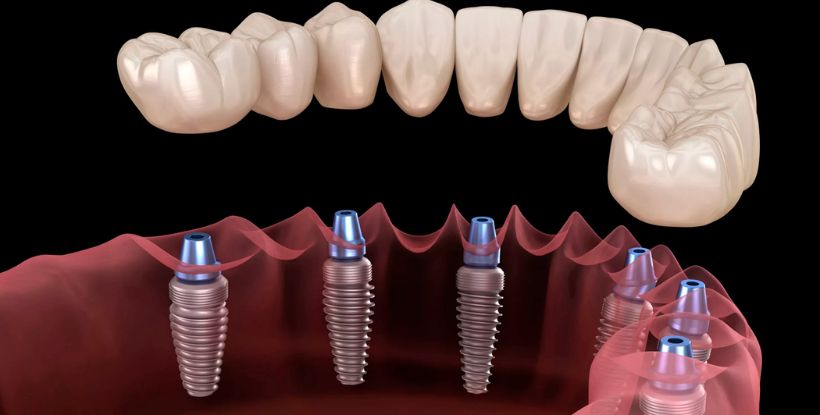What Happens During a Full Mouth Rehabilitation?
Imagine getting a perfectly restored smile—strong teeth, no pain, and the confidence to show off your pearly whites. Whether you've been dealing with missing teeth, gum issues, or severe tooth damage, this comprehensive treatment is designed to give your mouth a complete makeover. Full mouth rehabilitation can make that dream come true! But what exactly happens during this process? Let’s walk through it step by step so you know what to expect.

What is Full Mouth Rehabilitation?
Full mouth rehabilitation, also known as full mouth reconstruction or restoration, is a combination of dental procedures that work together to fix all the issues in your mouth—whether it’s your teeth, gums, or bite. It’s a customized plan to restore your oral health and enhance your smile.
Who Needs Full Mouth Rehabilitation?
You might need a full mouth rehabilitation if you have:
- Multiple missing or damaged teeth
- Chronic jaw pain or headaches from bite issues
- Worn-down teeth due to grinding (bruxism)
- Gum disease affecting the stability of your teeth
- Broken teeth from injury or accidents
What Happens During the Procedure?
Full mouth rehabilitation involves a series of treatments. Here’s how the process usually goes:
1. Initial Consultation
It all starts with a visit to the dentist. During this consultation, the dentist will examine your teeth, gums, and jaw to assess the condition of your mouth. They may take X-rays or 3D scans to get a clear picture of your dental health. Based on this, they’ll create a personalized treatment plan just for you.
2. Teeth Cleaning & Gum Treatment
If your gums are not healthy, the first step is to treat any gum disease. This could involve deep cleaning, scaling, and root planing. Healthy gums are essential for the success of the rest of the treatments.
3. Tooth Repair or Replacement
Next, your dentist will address any damaged or missing teeth. This might involve:
- Fillings or Crowns: For decayed or broken teeth.
- Dental Implants: For missing teeth, which replace the tooth root and provide a strong foundation for artificial teeth.
- Bridges or Dentures: If you’re missing several teeth in a row.
4. Correcting Bite Problems
If your bite (the way your teeth align together) is off, your dentist may recommend orthodontic treatments like braces or clear aligners to fix alignment issues. Correcting your bite is important to prevent jaw pain and further wear on your teeth.
5. Veneers or Cosmetic Touches
If aesthetics are part of the plan, your dentist may add veneers—thin, custom-made shells placed over the front of your teeth to improve their appearance. This can give you that picture-perfect smile you've always wanted!
6. Jaw Surgery (if necessary)
In rare cases, full mouth rehabilitation might involve surgery to realign the jaw if there are significant structural issues. This is only necessary if the bite problems cannot be corrected with orthodontics alone.
7. Final Adjustments & Smile Makeover
Once all the major work is done, your dentist will make any final adjustments to ensure everything is comfortable and functional. This may include minor reshaping or polishing the teeth. By the end of the process, you’ll have a fully restored, beautiful smile!
How Long Does Full Mouth Rehabilitation Take?
This depends on your unique needs. For some, the entire process can be completed in just a few months. For others, especially if multiple treatments are required, it may take up to a year or more. Your dentist will give you a clear timeline during your consultation.
Benefits of Full Mouth Rehabilitation
- Improved Oral Health: A healthy mouth means fewer dental problems in the future.
- Boosted Confidence: You’ll love showing off your new smile!
- Better Functionality: Eat, chew, and speak comfortably without pain or discomfort.
- Long-lasting Results: With proper care, the results can last for many years, even a lifetime.
Full mouth rehabilitation is like giving your smile a fresh start. Whether it’s fixing damaged teeth, replacing missing ones, or correcting bite issues, this treatment can completely transform your oral health and appearance. If you’re ready to take the first step toward a new smile, consult with your dentist today to learn more about how full mouth rehabilitation can work for you.



